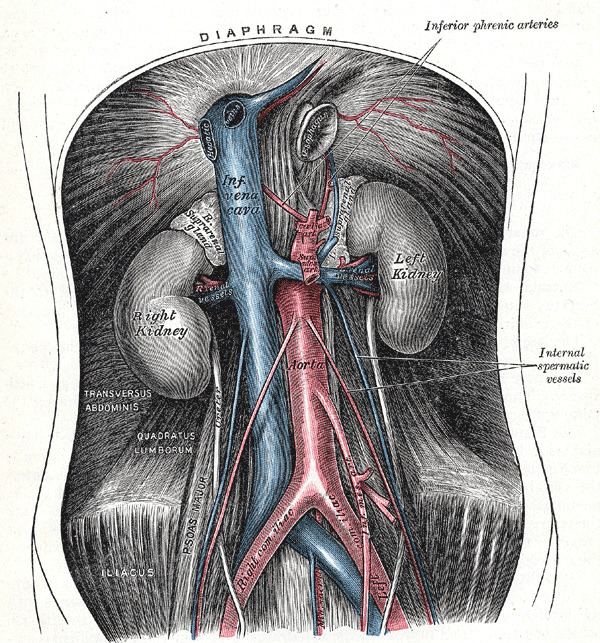TA A12.2.04.003 | FMA 15647 | |
 | ||
The organ of Zuckerkandl is a chromaffin body derived from neural crest located at the bifurcation of the aorta or at the origin of the inferior mesenteric artery. It can be the source of paraganglioma.
Contents
The term para-aortic body is also sometimes used to describe it, as it usually arises near the abdominal aorta, but this term can be the source of confusion, because the term "corpora paraaortica" is also used to describe the aortic body, which arises near the thoracic aorta. This diffuse group of neuroendocrine sympathetic fibres was first described by Emil Zuckerkandl, a professor of anatomy at the University of Vienna, in 1901.
Some sources equate the "aortic bodies" and "paraaortic bodies", while other sources explicitly distinguish between the two. When a distinction is made, the "aortic bodies" are chemoreceptors which regulate circulation, while the "paraaortic bodies" are the chromaffin cells which manufacture catecholamines.
Function
Its physiological role is thought to be of greatest importance during the early gestational period as a homeostatic regulator of blood pressure, secreting catecholamines into the fetal circulation.
The organ itself regresses in the late third trimester and following birth to form the aorticosympathetic group of the adult paraganglia.
Pathology
It can be the source of paraganglioma.
The organ of Zuckerkandl is of pathological significance in the adult as a common extra-adrenal site of pheochromocytoma though the most common extra-adrenal site is in the superior para-aortic region between the diaphragm and lower renal poles.
Extra-adrenal tumors account for around 10% of all cases of pheochromocytoma. Resection has been described.
In addition to its endocrine effects, it can also cause obstructive pathology.
